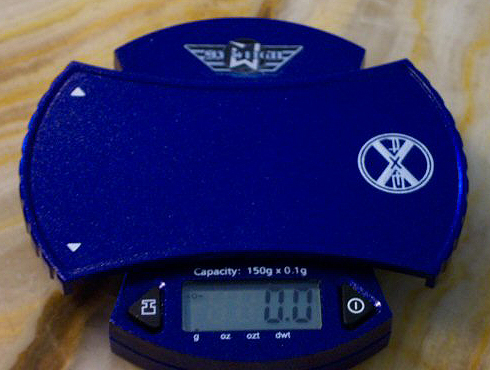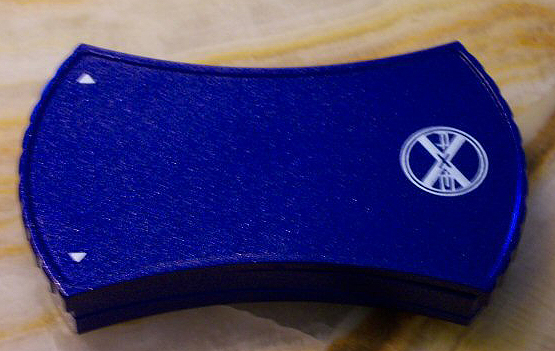|
You are reading the older HTML site Positive Feedback ISSUE 13may/june 2004
My Weigh AXE - Stylus
Force Gauge
This is not, as its name implies, an implement for cutting wood; instead, itís a digital scale. In keeping with the audiophile nature of Positive Feedback Online, I described it as a stylus force gauge, but itís really not. The AXE, sold by Arizona HiFi, L.L.C., works just fine as a stylus force gauge, but itís not designed as one. Instead, itís just a small digital scale. You can use it to weigh anything within its capacity of 150 grams. The readout can be switched from grams to ounces to Troy ounces, and even to pennyweights! Accurate to .1 gram, it showed me my Dynavector cartridge, set by another electronic stylus force gauge, was tracking at too high a weight: 2.1 grams. I reduced the tracking weight to 2.0 grams to comply with Dynavectorís recommendations. I donít think that made a life-or-death difference, but why not set the force precisely? Since the AXE is a general purpose scale designed to measure small items within its allowable capacity, the weighing platform is quite large by stylus force gauge standards, about five square inches. The AXE is packed in an attractive polyethylene carrying case, and Arizona HiFi, from whom I bought the unit, included a 100-gram calibration weight. Although the scale read exactly 100.0 grams for this weight, I followed the instructions to recalibrate the scale. It took only a few seconds to do, and when I finished, the scale read 100.0 grams! Obviously, I have too much time on my hands. Not content with the 100 gram calibration, I decided I wanted to verify that the scaleís accuracy at low weights, like those you would actually use for your cartridge. A visit to my local laboratory supply store provided a calibrated two gram weight. When I placed the weight on the AXE, it read 2.0 gramsóperfect. If I had been less fussy, I could have used a penny (which weighs exactly 2.5 grams) and a nickel (exactly 5.0 grams) as the calibration weights, and actually, I did. Both weighed exactly what they should. One caution: if you place the scale on top of your turntableís platter, the height of the scale could make the reading inaccurate, depending on your armís design. If thatís a problem in your system, find a cardboard box the right height and set the scale on it beside the platter. I found that on my Linn turntable, a couple of CD jewel cases put the AXE exactly at the height of the platter, and yes, it made a difference of about .3 gram. So here we have a digital scale thatís accurate, rugged, easy to use, and even available in different colors (silver, black, blue, and red)! But is it like purpose-built stylus force gaugesóreally expensive? Perhaps, but by stylus force gauge standards, itís a bargain: $49.95. Guess where itís made. The instructions could have been a little betteróI almost couldnít figure out how to open the scale to view the digital readout and controls, and the instructions apparently assumed it was intuitively obvious. The answer was to rotate the weighing platform 90į clockwise relative to the bottom of the scaleóobvious once youíve done it, I suppose. The instructions are also printed in a small, gray font that could be easier to read. But once past the shallow learning curve, using the AXE is extremely easy. It even has an automatic turn-off in case you forget to switch it off. So why do they call it the AXE? Look how itís shaped when itís closed.
Arizona HiFi, L.L.C. is at www.tubeaudio.com/index.html, or 480. 921. 9961
|


